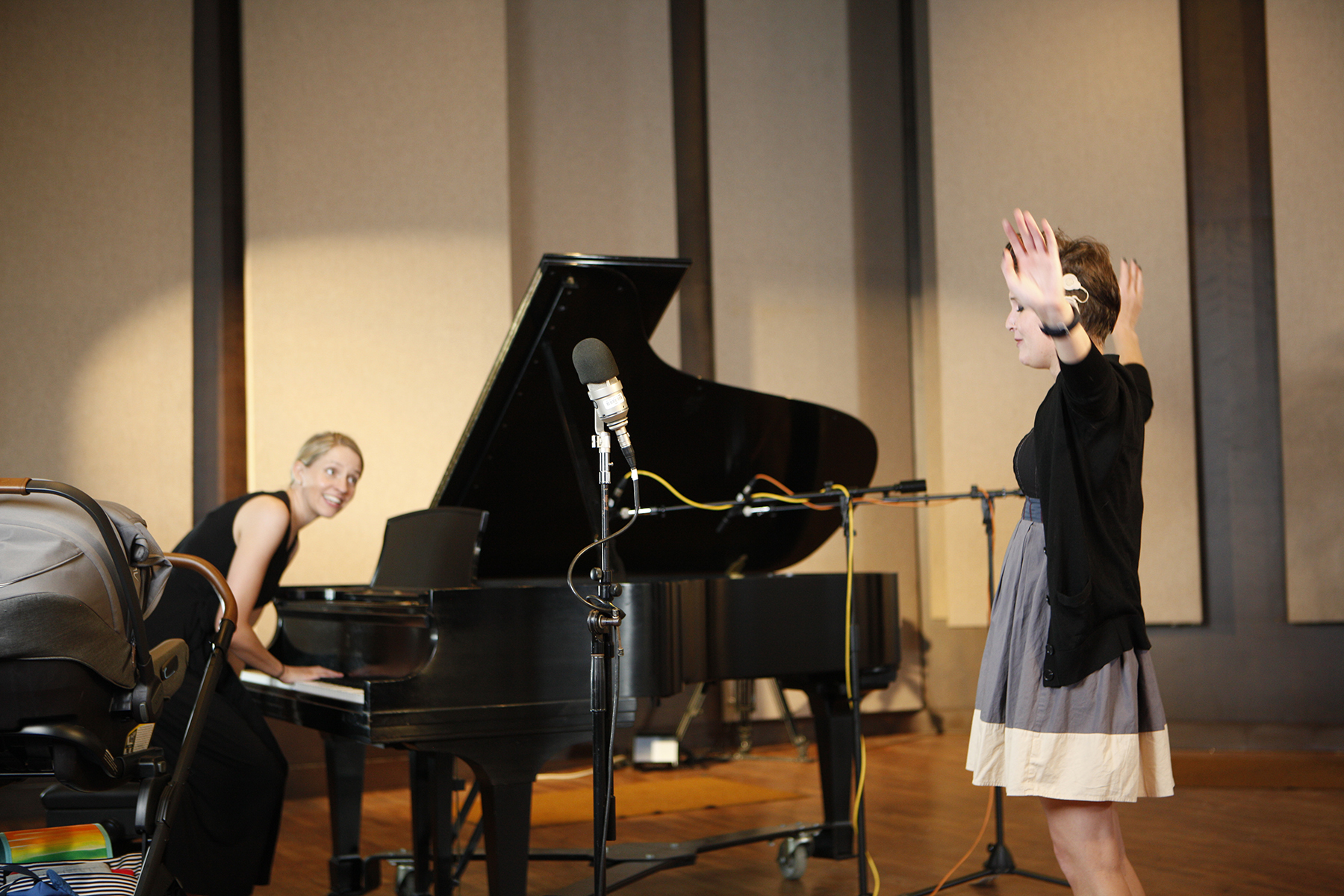Voice and the ability to create sounds that emanate from the body are fundamental to human experience. Yet, many people in the hard-of-hearing community have no relationship to the creative power of their voice, and as a result, do not experience an entire aspect of human embodiment. In a collaboration between students from USC’s Thornton School of Music, students from the Kaufman School of Dance, and the project’s community partner, Hearing Loss Association of America, LA (HLAA), Here, My Voice 3 offers personalized voice lessons to members of the hard-of-hearing community to support them in developing confidence in the creative and expressive possibilities of their voice.
In the previous iterations of Here, My Voice, two-person teams consisting of a hard-of-hearing participant and a personal voice teacher from the Thornton School of Music worked in close collaboration over the course of three months to develop and implement personalized, one-on-one voice lessons. The lessons concluded in a community recital during which each of the participants gave a performance. Here, My Voice 3 expands the focus on embodiment with movement exercises, and students from the Kaufman School of Dance will support the teams through a personalized program of movements. Additionally, a documentary film will be part of the new iteration, capturing the unique collaboration and personal stories of the participants.
Juri has worked with the hard-of-hearing community throughout her PhD research in Media Arts + Practice and the Keck School of Medicine’s Bionic Ear Lab. Juri’s passion for community intervention through innovative methods across the disciplines of arts, science, and medicine has led her to consider the delicate relationship hard-of-hearing persons have with their voice and to create an experimental curriculum that focuses on providing a safe space, close collaboration, and therapeutic alliances between the teacher and learner through mutual learning. Multi-sensory engagement and embodiment are designed to support the voice perception and invigorate creative expression. Further, for the main goal of the program, Juri centers the joy of engaging in creative expression rather than improving vocal skills. This has helped to provide a therapeutic experience while supporting participants in relinquishing insecurities and exploring the power of their voice.
While voice lessons were something the project’s hard-of-hearing partners never thought possible, the program has been able to create transformative experiences of self-discovery and helped participants gain confidence. For Thornton students, preparatory workshops and the collaborations with the hard-of-hearing partners has provided a great learning experience. Overall, this multidisciplinary project integrating expertise and mentorship across multiple fields – audiology, pedagogy, music therapy, dance, and storytelling ¬– has been a great success, and Juri looks forward to continuing to explore the program’s further potential.


